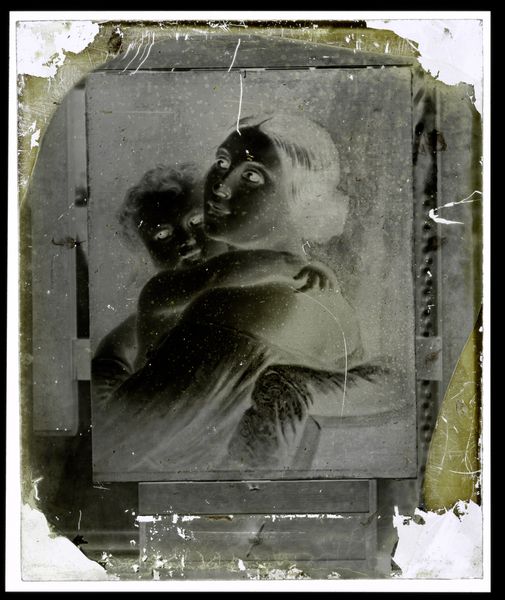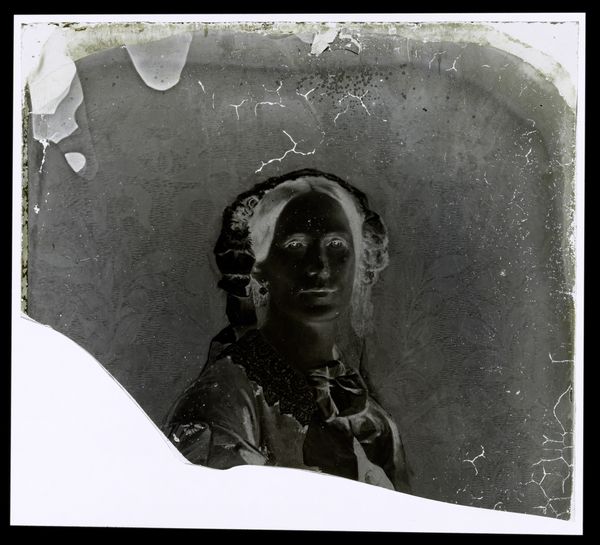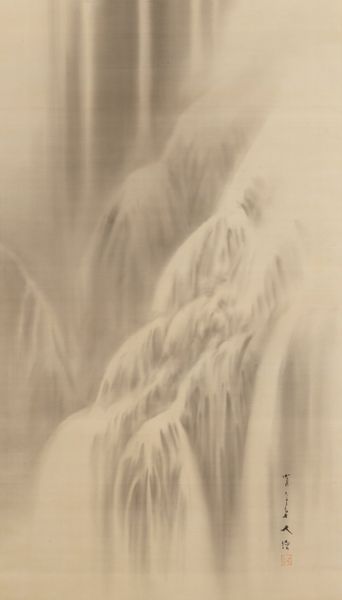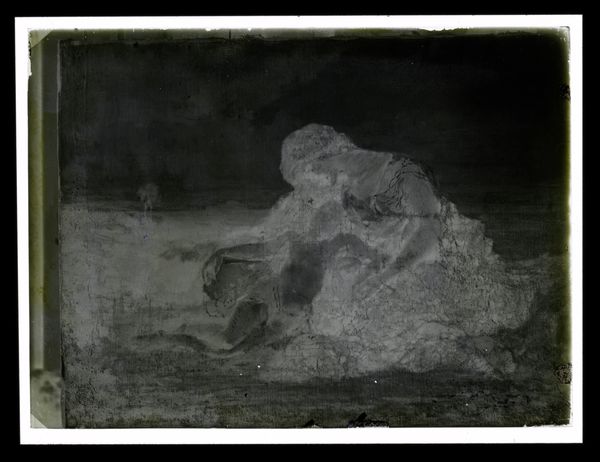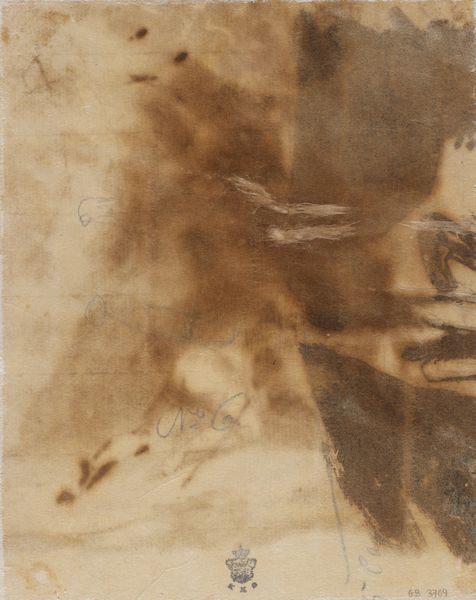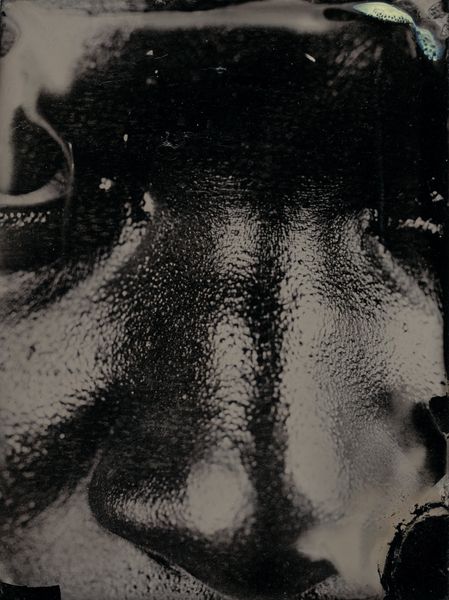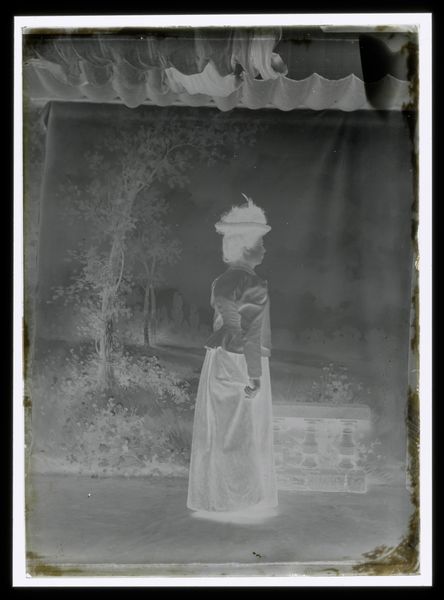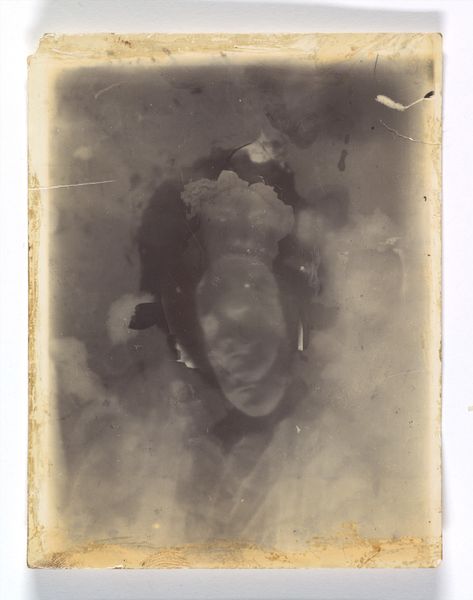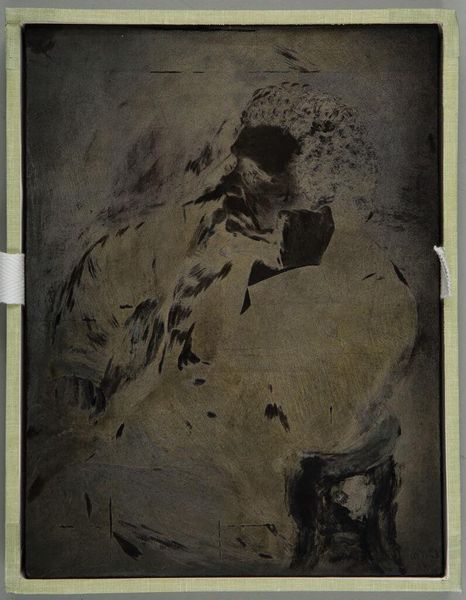
Dimensions: image: 19 x 12.5 cm (7 1/2 x 4 15/16 in.), irregular
Copyright: National Gallery of Art: CC0 1.0
Curator: There’s something ghostly and arresting about this gelatin-silver print from 1855, entitled "Portrait of Woman and Child" by Jean-Baptiste Frénet. What strikes you first? Editor: Immediately, the negative tonality leaps out. The stark reversal makes the scene feel like a half-remembered dream, charged with both tenderness and an unsettling quality. The woman’s dress almost glows. Curator: That glow certainly invites reflection. Clothes often tell us a great deal about social status. Consider the textures of her dress—perhaps signifying prosperity, reflecting aspirations, or anxieties, of the burgeoning middle class, who sought to solidify their social standing through portraiture. Editor: Exactly. Beyond surface-level prosperity, clothing functioned as visual codes of behavior, communicating the perceived moral character. But here, that visual clarity is subverted. This ghostly effect could indicate societal disruption, given the time period. Were social certainties fracturing in a time of rapid change and industrialization? Curator: An astute observation! One could interpret the contrast and the manipulation of light and shadow as a reflection of psychological depths, not just a depiction of social standing. The act of viewing such a strangely developed print elicits a deeply felt, albeit unconscious response—it makes the past come to us in a hauntingly distorted way. Perhaps the negative also points to repressed narratives regarding women during this era. Editor: Yes! The reversed tones could signify something latent or suppressed—it's a way of hinting at hidden societal stories through an arresting image. The use of light and shadow to convey emotions mirrors the visual strategies used by romanticism. Curator: So, rather than a literal depiction of mother and child, we glimpse a profound and subjective feeling. Thank you for sharing those fascinating reflections. It underlines how crucial this period of photographic innovation was in shaping perceptions of both subject and society. Editor: And to recognize that an altered sense of familiarity makes it emotionally potent to viewers, long after the original intention might have been.
Comments
No comments
Be the first to comment and join the conversation on the ultimate creative platform.

